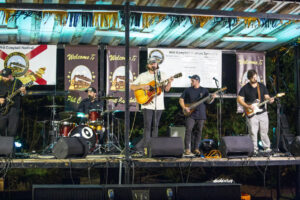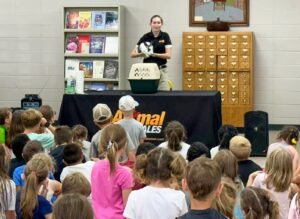Solar eclipse draws all eyes Monday
By Bart Moss for the FCT
North Alabama was outside the “path of totality” for Monday’s solar eclipse, but that didn’t stop people across Franklin County from stepping outside to view the unique astronomical spectacle.
Students at Russellville City Schools were among those to witness the cosmic occurrence. Superintendent Heath Grimes called the eclipse “a great educational opportunity for our students.” The school system provided eclipse glasses, thanks to a donation, to all students. Additionally, RCS’ school board meeting room was the site for an informational meeting preceding the eclipse, held Thursday for students, parents and the community to educate about the upcoming celestial event. It was attended by more than sixty community members.
A solar eclipse happens somewhere on Earth approximately every 18 months. However, from any given spot, a solar eclipse only occurs every 375 years. This is the first solar eclipse anywhere in the United States since 1979 and the first to be visible from coast-to-coast since 1918.
Rocky Stone, a retired Russellville administrator and part-time math and science teacher, led the meeting, along with Eric Jeter, president of the Shoals Astronomy Club. They educated those in attendance on what to expect during the eclipse and emphasized safety by demonstrating many ways to watch the eclipse with damaging one’s eyes.
“This is likely a once-in-a-lifetime event for most people,” said Stone. “We want our students and our community to enjoy it safely.”
Both Stone and Jeter said they wanted to dispel some of the mass hysteria about health concerns while stressing common sense safety measures.
“It is OK to go outside during an eclipse,” said Jeter. “Just don’t look directly at the sun. On any normal day when we are outside, we don’t stare at the sun. Well, you shouldn’t stare at the sun during an eclipse either.”
According to scientists, the only time it safely to look at a total eclipse without glasses is during the time of totality – which Franklin County residents did not experience. The path of totality was a 67-mile wide line beginning in Government Point, Oregon, and stretching across 14 states on a path toward Charleston, S.C. The closest point within the path of totality for Franklin County was north of Nashville, Tenn.; Franklin County experienced a 94 percent eclipse of the sun, requiring all watchers to keep their eclipse glasses in place for the duration. “Even a half percent of sunlight will damage your eyes,” Stone pointed out.
Blanca Luna, a parent in attendance Thursday with her two sons, said she was glad Russellville held the meeting. It calmed many of her fears.
“I was happy to learn about the safe ways to view the eclipse,” said Luna. “I want my children to be able to experience it, but I was concerned for their safety. This meeting really helped to inform me, and I am no longer scared. I am glad I came.”
Grimes thanked Stone and Jeter for their proactive help in educating the community and his faculty on safety so their students could experience the eclipse safely at school.
Eclipse glasses were flying off the shelves across the nation, including at Russellville Public Library, where a free glasses giveaway drew people to line up down the block.
For those who missed the eclipse, or those who want to see it again, a bevy of photos and videos are available online from NASA and other professional sources. One unique reminder of the eclipse comes from the U.S. Postal Service.
The USPS is selling a first-of-its-kind Total Eclipse of the Sun Forever stamp that changes from an eclipse image to the moon from the heat of one’s finger. Once it cools, it reverts back to the eclipse. The map on the back of the stamp pane shows the eclipse’s path.
The stamp photo, according to a USPS press release, was taken by retired NASA astrophysicist Fred Espenak, “Mr. Eclipse.” He’s considered by many to be the world’s leading authority on total eclipses, having seen 28 of them.
Stamps are available for purchase online at https://store.usps.com/store.
FCT managing editor Alison James contributed to this story.










